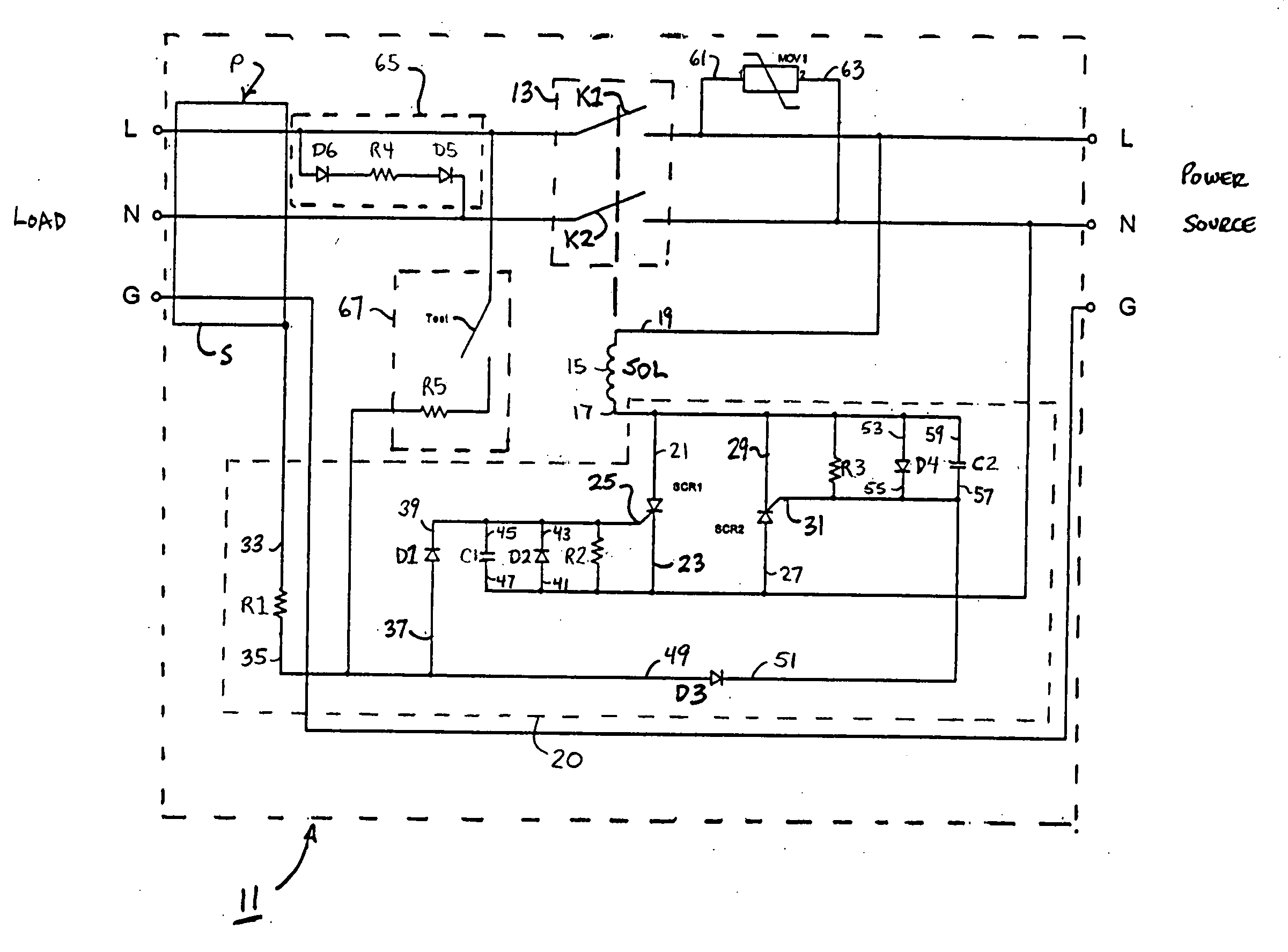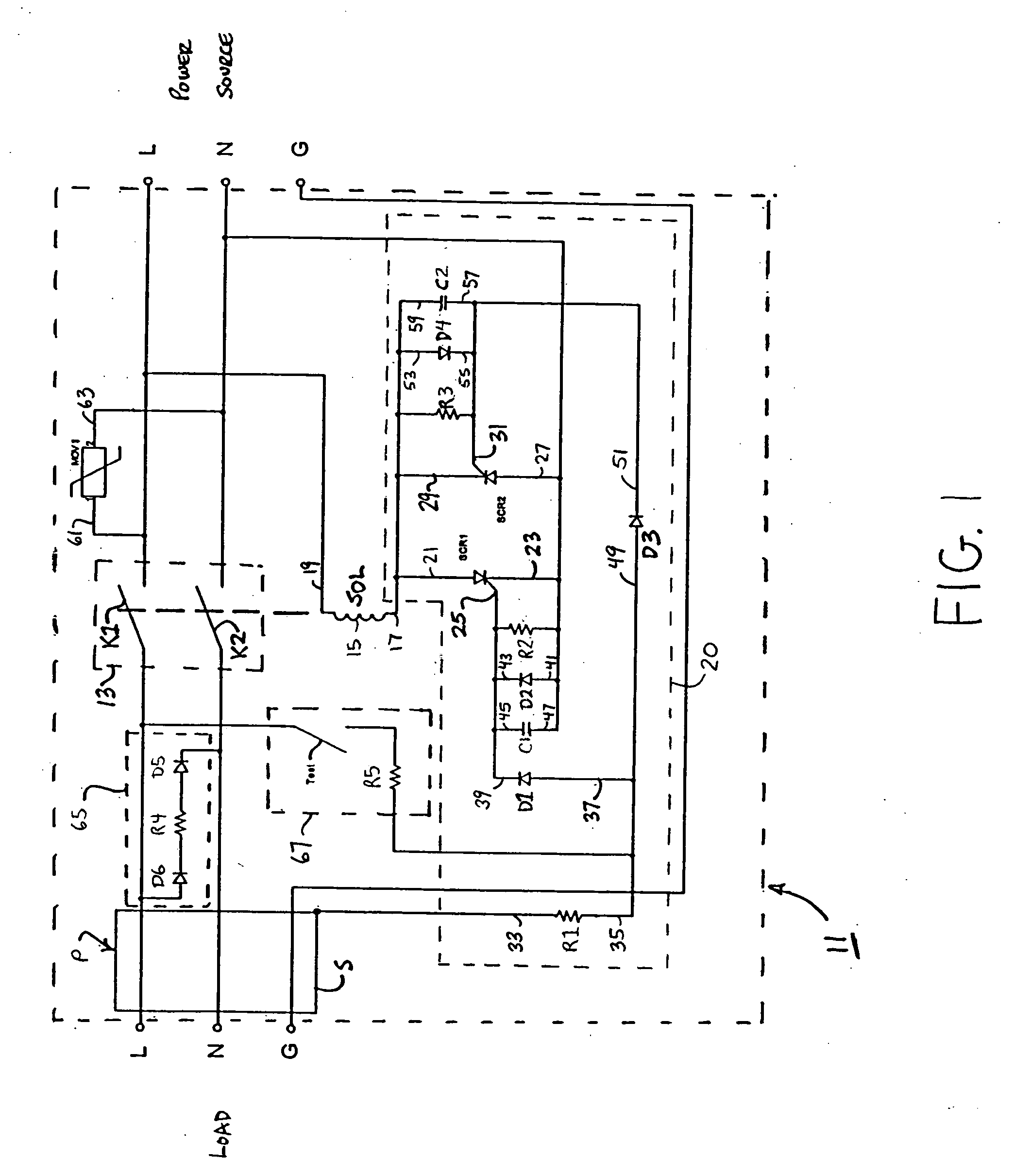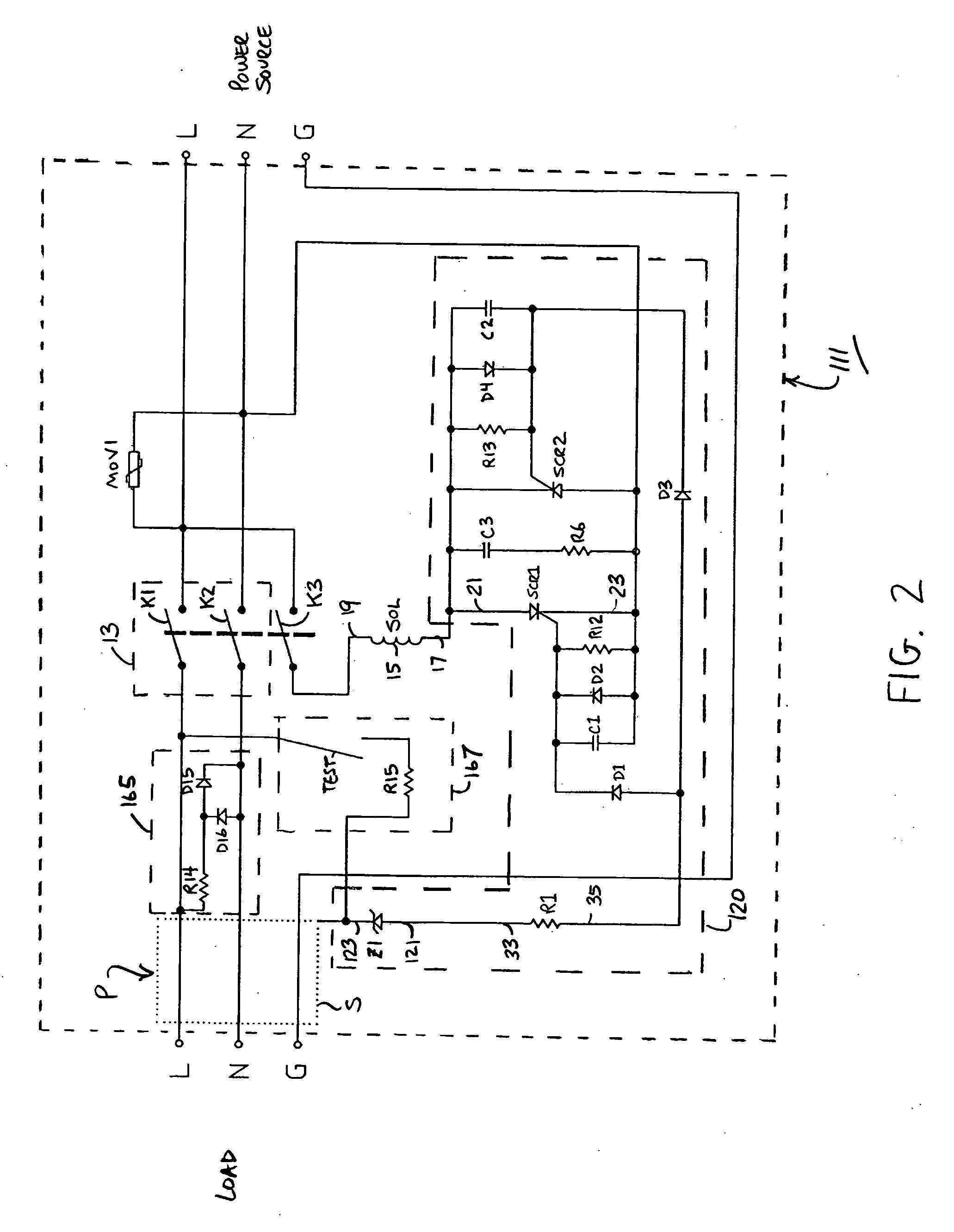Fireguard circuit
a safety device and circuit technology, applied in emergency protective arrangements, emergency protective arrangements for limiting excess voltage/current, electrical equipment, etc., can solve problems such as ground fault conditions, ground fault conditions, and potential dangers, and achieve the effect of convenient assembly
- Summary
- Abstract
- Description
- Claims
- Application Information
AI Technical Summary
Benefits of technology
Problems solved by technology
Method used
Image
Examples
first embodiment
[0025] Referring now to FIG. 1, there is shown a fireguard circuit constructed according to the teachings of the present invention, the fireguard circuit being represented generally by reference numeral 11. Fireguard circuit 11 is designed principally for use as a safety device for a power cable P which connects a power source (i.e., a line) to a load, said power cable P including a power line L, a neutral line N and a ground line G. Each of the power and neutral lines L and N is wrapped with a metal sheath or other similar type of shielded wrapping. The metal sheaths of the power and neutral lines L and N are, in turn, twisted together so as to effectively form a single metal sheath S which surrounds power line L and neutral line N. Ground line G remains electrically isolated from power line L and neutral line N.
[0026] As will be discussed in detail below, fireguard circuit 11 interrupts the flow of current through power line L and neutral line N extending between the power source ...
second embodiment
[0056] Specifically, referring now FIG. 2, there is shown a fireguard circuit constructed according to the teachings of the present invention, the fireguard circuit being represented generally by reference numeral 111.
[0057] Fireguard circuit 111 (which may also be referred to herein as safety circuit 111) is identical in all respects with fireguard circuit 11 with four notable distinctions, as will be enumerated below.
[0058] As the first and primary distinction from fireguard circuit 11, fireguard circuit 111 additionally includes a third normally-closed switch K3 (also referred to herein as protection switch K3) which is located in the line which connects second end 19 of winding 15 to the power line L. Solenoid SOL is ganged to third normally-closed switch K3. As a result, solenoid SOL is responsible for selectively controlling the connective position of switches K1, K2 and K3. Specifically, when solenoid SOL is de-energized, switches K1, K2 and K3 remain in their closed positio...
third embodiment
[0062] Referring now FIG. 3, there is shown a fireguard circuit constructed according to the teachings of the present invention, the fireguard circuit being represented generally by reference numeral 211.
[0063] Fireguard circuit 211 is identical in all respects with fireguard circuit 111 with one notable exception: the location of protection switch K3. Specifically, as can be seen in FIG. 3, protection switch K3 is relocated in the line which connects metal sheath S to the input of arc detection subcircuit 120 (i.e., cathode 123 of zener diode Z1). As a result, solenoid SOL connects the output of arc detecetion subcircuit 120 (i.e., anode 21 of first silicon controlled rectifier SCR1) with power line L (as in fireguard circuit 11).
PUM
 Login to View More
Login to View More Abstract
Description
Claims
Application Information
 Login to View More
Login to View More - R&D
- Intellectual Property
- Life Sciences
- Materials
- Tech Scout
- Unparalleled Data Quality
- Higher Quality Content
- 60% Fewer Hallucinations
Browse by: Latest US Patents, China's latest patents, Technical Efficacy Thesaurus, Application Domain, Technology Topic, Popular Technical Reports.
© 2025 PatSnap. All rights reserved.Legal|Privacy policy|Modern Slavery Act Transparency Statement|Sitemap|About US| Contact US: help@patsnap.com



